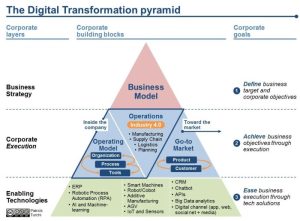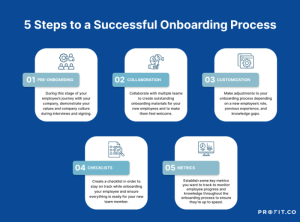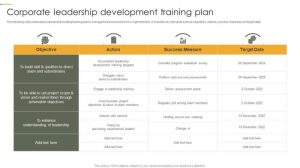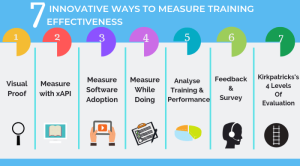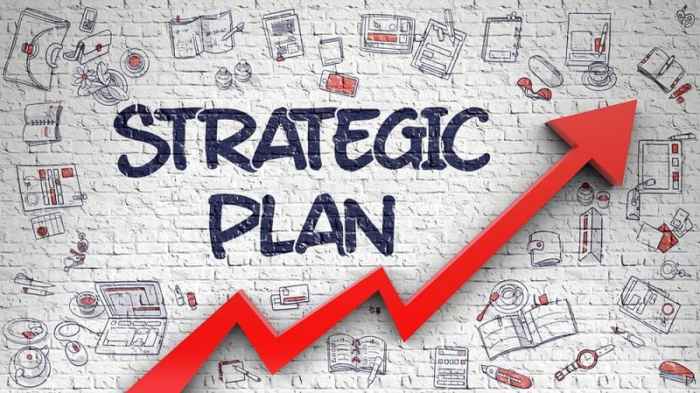
Strategic planning is the cornerstone of sustainable corporate growth. It’s not simply about setting ambitious targets; it’s about meticulously charting a course, navigating market complexities, and leveraging internal strengths to achieve lasting expansion. This exploration delves into the multifaceted process, examining frameworks, methodologies, and critical considerations for businesses of all sizes aiming to achieve significant and sustainable growth.
From analyzing the current internal and external environments to developing and implementing tailored growth strategies, we’ll cover the key stages involved in creating a robust strategic plan. We’ll explore various approaches, including market penetration, development, and diversification, highlighting the resources needed and potential risks and rewards associated with each. The importance of consistent monitoring, evaluation, and employee training in ensuring the success of the plan will also be addressed through real-world examples and a hypothetical case study.
Analyzing the Current State of the Corporation
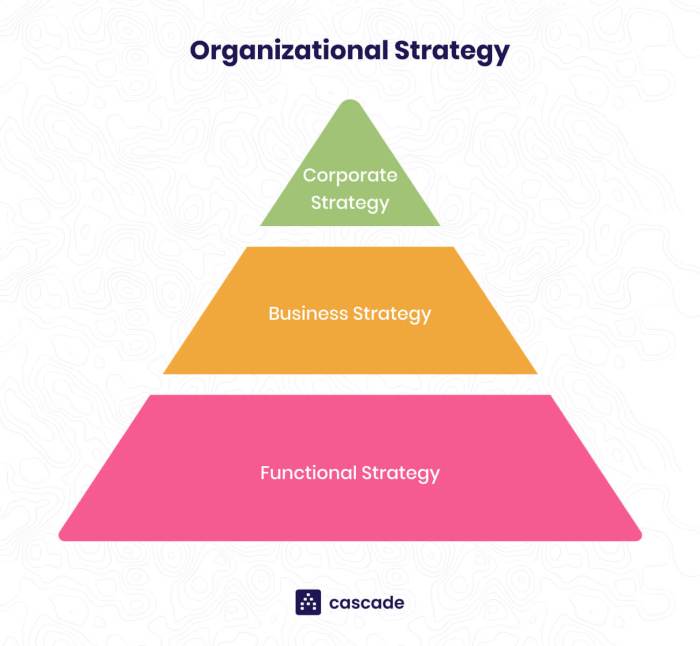
Understanding the current state of the corporation is crucial for effective strategic planning and achieving sustainable growth. A comprehensive analysis, encompassing both internal and external factors, provides a clear picture of the organization’s strengths, weaknesses, opportunities, and threats (SWOT analysis). This analysis forms the foundation for developing realistic and impactful growth strategies.
Methodology for Internal and External Environmental Analysis
A robust methodology for conducting a thorough environmental analysis involves a systematic approach incorporating both qualitative and quantitative data. Internal analysis typically uses methods such as value chain analysis, resource mapping, and internal audits to assess the organization’s capabilities and limitations. External analysis often employs techniques like PESTLE analysis (Political, Economic, Social, Technological, Legal, Environmental) and Porter’s Five Forces to understand market dynamics and competitive landscapes.
The integration of these analyses provides a holistic view. For example, a value chain analysis might reveal inefficiencies in production, while a PESTLE analysis could highlight upcoming regulations impacting the industry. The combination of these insights informs strategic decisions.
Internal Strengths and Weaknesses Impacting Growth Strategies
Internal strengths and weaknesses are inherent characteristics of the organization. Strengths might include a strong brand reputation, innovative product portfolio, highly skilled workforce, or efficient operations. For instance, a company with a strong brand reputation can command premium prices and attract loyal customers, thus fostering growth. Conversely, weaknesses could involve outdated technology, inefficient processes, high employee turnover, or a lack of skilled personnel.
A company with outdated technology might struggle to compete with more technologically advanced rivals, hindering growth. Identifying and addressing these internal factors is critical for maximizing growth potential.
External Opportunities and Threats in Strategic Planning
External opportunities and threats represent factors beyond the organization’s direct control. Opportunities could include emerging markets, technological advancements, shifting consumer preferences, or government initiatives. For example, the rise of e-commerce presents a significant opportunity for businesses to expand their reach and customer base. Threats, on the other hand, could include increasing competition, economic downturns, changes in regulations, or disruptive technologies.
For example, the emergence of a strong competitor could significantly impact market share and profitability. Understanding and responding to these external factors is vital for navigating the dynamic business environment.
Internal and External Factor Comparison
| Internal Factors | Type | External Factors | Type |
|---|---|---|---|
| Strong Brand Reputation | Strength | Emerging Markets | Opportunity |
| Outdated Technology | Weakness | Increased Competition | Threat |
| Highly Skilled Workforce | Strength | Government Regulations | Threat/Opportunity (depending on regulation) |
| Inefficient Processes | Weakness | Technological Advancements | Opportunity/Threat (depending on adoption capability) |
Implementation and Execution of the Plan
Successfully implementing a strategic plan requires meticulous planning and consistent execution. This section Artikels a step-by-step approach, clarifying roles, responsibilities, and resource allocation to ensure the chosen growth strategy is effectively realized. We will focus on a practical, phased implementation to minimize risk and maximize impact.
Step-by-Step Implementation Plan
A well-defined implementation plan is crucial for achieving strategic objectives. This plan should break down the overall strategy into manageable tasks with clear timelines and milestones. Each phase builds upon the previous one, allowing for continuous monitoring and adjustments. For example, if the chosen growth strategy is market expansion into a new geographic region, the plan might be divided into phases focusing on market research, infrastructure development, team recruitment, marketing campaigns, and sales operations.
- Phase 1: Market Research and Analysis (Months 1-3): This involves comprehensive market research to understand the target market, competitive landscape, and regulatory environment. Milestones include completing market segmentation, identifying key competitors, and finalizing a go-to-market strategy.
- Phase 2: Infrastructure Development (Months 4-6): This phase focuses on building the necessary infrastructure, including setting up offices, establishing supply chains, and securing necessary licenses and permits. Milestones include securing office space, establishing key supplier relationships, and obtaining all necessary legal approvals.
- Phase 3: Team Recruitment and Training (Months 7-9): This phase involves recruiting and training the team required to support the expansion. Milestones include hiring key personnel, conducting training programs, and establishing clear communication channels.
- Phase 4: Marketing and Sales Launch (Months 10-12): This phase focuses on launching marketing campaigns and sales operations in the new region. Milestones include launching targeted marketing campaigns, establishing sales channels, and achieving initial sales targets.
- Phase 5: Monitoring and Evaluation (Ongoing): Continuous monitoring and evaluation are critical to ensure the plan stays on track and adjustments are made as needed. Milestones include regular performance reviews, analysis of key metrics, and adaptation of the plan based on performance data.
Roles and Responsibilities
Clearly defined roles and responsibilities are essential for effective execution. This ensures accountability and minimizes confusion. A responsibility matrix can be used to clarify who is responsible for each task and milestone.
| Role | Responsibilities |
|---|---|
| CEO | Overall strategic direction, resource allocation, and performance monitoring. |
| Marketing Director | Developing and executing marketing campaigns, managing brand reputation. |
| Sales Director | Leading sales teams, achieving sales targets, managing customer relationships. |
| Operations Manager | Overseeing daily operations, ensuring smooth workflow, managing resources. |
| Finance Manager | Managing budgets, tracking expenses, ensuring financial stability. |
Resource Allocation
Effective resource allocation is critical for successful implementation. This involves allocating financial resources, human capital, and technological resources strategically to support the chosen growth strategy. For example, if the strategy focuses on product innovation, a larger portion of resources might be allocated to research and development.
Effective resource allocation requires a balanced approach, considering both short-term needs and long-term sustainability.
Monitoring and Evaluation

Successful strategic planning isn’t a one-time event; it’s an ongoing process requiring consistent monitoring and evaluation to ensure the plan remains relevant and effective in achieving corporate growth objectives. This involves establishing a robust system for tracking progress, identifying key performance indicators (KPIs), and defining corrective actions to address any deviations from the planned trajectory.A well-defined monitoring and evaluation system provides crucial feedback, allowing for timely adjustments and maximizing the chances of achieving strategic goals.
This proactive approach minimizes risks and ensures resources are allocated efficiently, ultimately leading to improved outcomes and stronger corporate growth.
Key Performance Indicators (KPIs) for Monitoring Strategic Goals
The selection of KPIs is crucial for effective monitoring. These metrics should directly reflect the strategic goals Artikeld in the plan and provide a clear picture of progress. Choosing the wrong KPIs can lead to misinterpretations and ineffective adjustments. Therefore, a careful and deliberate selection process is essential. The chosen KPIs should be specific, measurable, achievable, relevant, and time-bound (SMART).
Examples of KPIs and Their Measurement
| Strategic Goal | KPI | Measurement Method | Target |
|---|---|---|---|
| Increase Market Share | Percentage of Market Share | Market research data, sales reports | 15% increase within 2 years |
| Improve Customer Satisfaction | Customer Satisfaction Score (CSAT) | Customer surveys, feedback forms | Increase CSAT from 75% to 85% within 1 year |
| Enhance Operational Efficiency | Reduction in Production Costs | Cost accounting data, operational reports | 10% reduction in production costs within 18 months |
| Expand into New Markets | Number of New Customers Acquired in New Markets | Sales data, CRM reports | 500 new customers within the first year of expansion |
Corrective Actions for Deviations from the Plan
Regular monitoring will inevitably reveal instances where performance deviates from the planned trajectory. Having pre-defined corrective actions for potential scenarios is crucial for a swift and effective response. These actions should be tailored to the specific deviation and its root cause.
Examples of Corrective Actions
- Scenario: Market share growth is lagging behind projections. Corrective Action: Re-evaluate marketing strategies, explore new marketing channels, adjust pricing strategies, or conduct competitive analysis to identify opportunities.
- Scenario: Customer satisfaction scores are declining. Corrective Action: Implement customer feedback mechanisms, improve customer service training, address specific customer complaints, or review product/service quality.
- Scenario: Production costs are higher than anticipated. Corrective Action: Investigate areas of inefficiency, optimize production processes, negotiate better deals with suppliers, or invest in new technology.
- Scenario: New market expansion is slower than expected. Corrective Action: Re-assess market entry strategies, adapt marketing campaigns to local preferences, strengthen partnerships with local distributors, or reconsider market selection.
Corporate Growth and Corporate Training
Strategic corporate growth hinges on a capable and adaptable workforce. Ambitious expansion plans, whether through market penetration, product diversification, or geographic expansion, require employees equipped with the necessary skills and knowledge to navigate the challenges and capitalize on the opportunities presented. Therefore, a robust and strategically aligned corporate training program is not merely a supplementary initiative but a crucial component of any successful growth strategy.The synergistic relationship between corporate growth and employee training is undeniable.
As a company expands, its operational complexity increases, demanding a workforce proficient in new technologies, processes, and management techniques. Without adequate training, the company risks hindering its growth trajectory, encountering bottlenecks in productivity, and potentially compromising the quality of its products or services. Investing in employee development becomes an investment in the company’s future success.
Targeted Training Initiatives Enhance Growth Strategy Implementation
Targeted training initiatives directly address the specific skill gaps and knowledge deficiencies identified during the strategic planning process. By focusing on areas critical to the successful execution of growth strategies, training programs can significantly enhance efficiency and effectiveness. For instance, if a company is expanding into a new international market, training programs focused on cultural sensitivity, language proficiency, and international business practices become paramount.
Similarly, the implementation of a new CRM system requires comprehensive training for employees to ensure smooth adoption and maximize the system’s benefits. Failing to provide such training could lead to employee frustration, system underutilization, and ultimately, a slower-than-expected return on investment in the new system.
Examples of Training Programs Supporting Corporate Expansion
Effective training programs are tailored to the specific needs of the expanding corporation. Here are some examples demonstrating how targeted training can equip employees for successful expansion:
- Sales Training for New Markets: A company expanding into a new geographic region might offer intensive sales training focusing on the unique characteristics of that market, including customer demographics, competitive landscape, and effective sales strategies for that specific region. This might include role-playing exercises simulating customer interactions and presentations on local business customs and regulations.
- Technical Skills Training for New Technologies: Implementing new software or machinery requires comprehensive technical training for employees. This training would involve hands-on sessions, simulations, and ongoing support to ensure employees are comfortable and proficient in using the new technologies. For example, a manufacturing company adopting a new automated production line would need thorough training for technicians and operators on maintenance, troubleshooting, and safe operation of the new equipment.
- Leadership Development for Expanded Teams: As a company grows, it needs strong leaders at all levels. Leadership development programs, focusing on delegation, communication, conflict resolution, and team building, would prepare employees for managing larger and more diverse teams. These programs could include workshops, mentoring, and on-the-job coaching to develop the skills necessary for effective leadership within an expanding organizational structure.
- Cross-functional Collaboration Training: Successful expansion often requires increased collaboration between different departments. Training focused on communication, project management, and teamwork skills would improve interdepartmental cooperation and efficiency. This could involve team-building exercises, workshops on effective communication strategies, and simulations of cross-functional projects.
Illustrative Example
This section details a hypothetical company, “InnovateTech,” and Artikels a strategic plan for its growth, incorporating elements discussed previously. InnovateTech is a mid-sized software company specializing in developing custom business applications for small and medium-sized enterprises (SMEs). The plan addresses its current market position, identifies opportunities, and proposes strategies for achieving sustainable growth.
InnovateTech: Current Market Position
InnovateTech currently holds a moderate market share in its niche. Its strong points include a reputation for high-quality software and excellent customer service. However, the company faces increasing competition from larger firms offering similar services at potentially lower prices. Profit margins are under pressure, and the company is struggling to attract and retain top engineering talent in a competitive job market.
Market research indicates a growing demand for cloud-based solutions, a sector where InnovateTech currently has limited offerings.
Strategic Plan for InnovateTech
InnovateTech’s strategic plan focuses on three key areas: expanding its cloud-based offerings, enhancing its marketing and sales efforts, and investing in employee development.
Expanding Cloud-Based Offerings
This involves developing a suite of cloud-native applications and migrating existing applications to the cloud. This will require significant investment in research and development, hiring additional cloud specialists, and partnering with cloud infrastructure providers. Success will be measured by the percentage of revenue generated from cloud-based products and the number of new cloud clients acquired. This expansion will directly address the growing market demand and enhance InnovateTech’s competitiveness.
A realistic timeline would involve launching a minimum viable product (MVP) within six months, followed by a full product launch within a year. Similar successful transitions can be observed in companies like Salesforce, who strategically shifted towards cloud-based solutions, leading to significant growth.
Enhancing Marketing and Sales Efforts
This involves improving the company’s online presence, developing targeted marketing campaigns, and strengthening its sales team. This will include upgrading the company website, implementing search engine optimization () strategies, and utilizing content marketing to attract potential clients. Success will be measured by an increase in website traffic, lead generation, and sales conversions. To improve sales team performance, training on new sales techniques and cloud-based solutions will be provided.
The company will also explore partnerships with complementary businesses to expand its reach. This strategy draws inspiration from successful B2B marketing campaigns like those employed by Hubspot, which focus on providing valuable content and building strong relationships with potential clients.
Investing in Employee Development
This involves providing training and development opportunities to improve employee skills and morale. This will include offering training courses in cloud technologies, project management, and sales techniques. The company will also implement programs to foster a positive work environment and improve employee retention. Success will be measured by employee satisfaction scores, retention rates, and improvements in employee performance.
Investing in employee development is crucial to attracting and retaining top talent, particularly in a competitive tech market. Companies like Google, known for their extensive employee training programs, demonstrate the positive impact of this investment on overall business success.
Implementation and Anticipated Results
The implementation of this plan will be phased, with each area addressed concurrently. Phase 1 (months 1-6) will focus on developing the MVP for the cloud-based application, implementing initial marketing campaigns, and beginning employee training programs. Phase 2 (months 7-12) will focus on the full launch of the cloud-based application, expanding marketing efforts, and assessing the impact of employee training.
Phase 3 (months 13-18) will involve analyzing results, adjusting the plan as needed, and further expanding the company’s cloud offerings.We anticipate that the implementation of this strategic plan will lead to a significant increase in revenue, improved market share, and enhanced profitability within two years. Specifically, we project a 20% increase in revenue and a 10% increase in market share within the first year, followed by further growth in subsequent years.
This projection is based on market research, competitor analysis, and similar growth trajectories observed in comparable companies. Of course, these projections are subject to market conditions and the successful execution of the strategic plan.
Ultimately, successful strategic planning for corporate growth hinges on a deep understanding of the business landscape, a well-defined vision, and a commitment to continuous improvement. By meticulously analyzing internal capabilities, external opportunities, and potential threats, businesses can craft tailored strategies that drive sustainable expansion. The implementation process, coupled with robust monitoring and employee training, ensures the plan’s effectiveness, paving the way for long-term success and market leadership.
General Inquiries
What is the difference between strategic and operational planning?
Strategic planning focuses on long-term goals and broad objectives, while operational planning details the specific actions and resources needed to achieve those goals.
How often should a strategic plan be reviewed and updated?
Ideally, strategic plans should be reviewed at least annually, or more frequently if market conditions change significantly.
What are some common pitfalls to avoid in strategic planning?
Common pitfalls include unrealistic goals, insufficient resource allocation, lack of employee buy-in, and failure to adapt to changing market conditions.
How can I ensure my employees are engaged in the strategic planning process?
Involve employees at various levels, solicit their input, and clearly communicate the plan’s goals and their role in achieving them.
